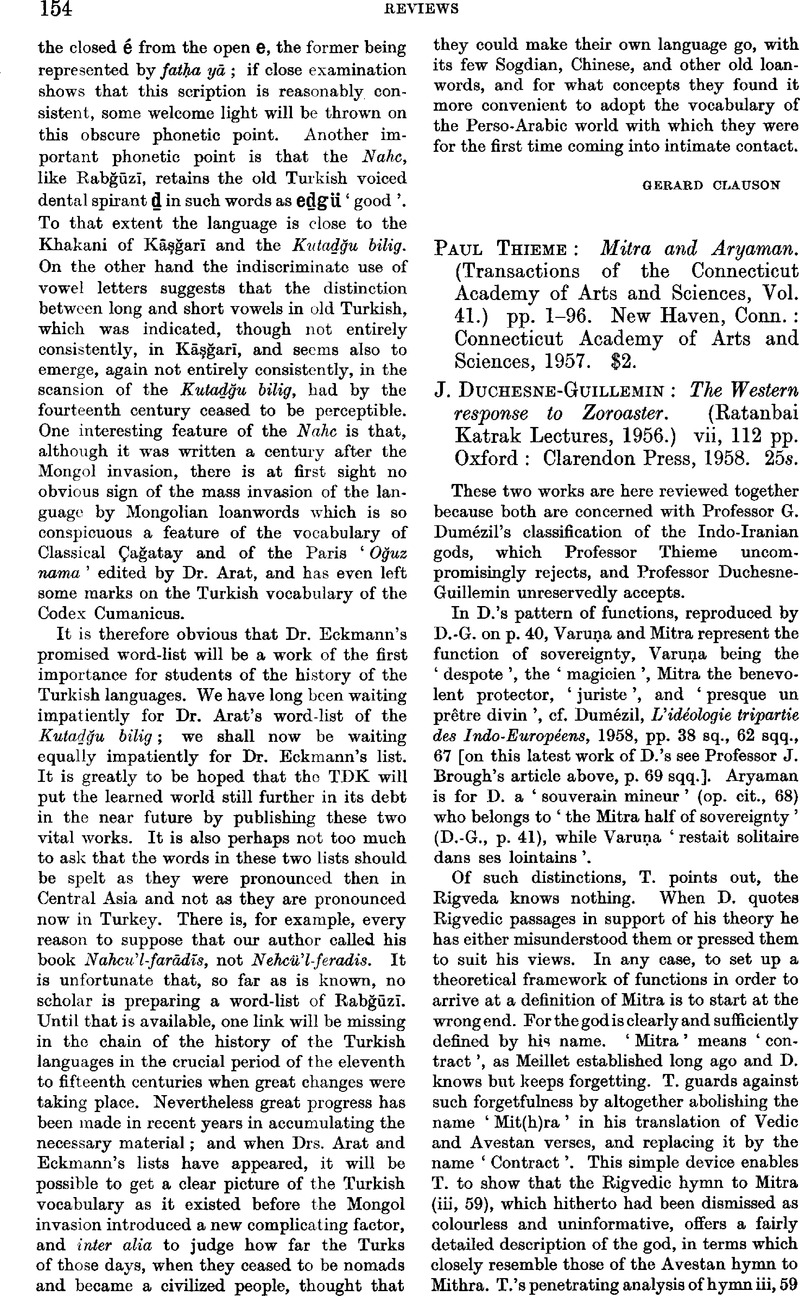No CrossRef data available.
Article contents
Paul Thieme: Mitra and Aryaman. (Transactions of the Connecticut Academy of Arts and Sciences, Vol. 41.) pp. 1–96. New Haven, Conn.: Connecticut Academy of Arts and Sciences, 1957. $2. - J. Duchesne-Guillemin: The Western response to Zoroaster. (Ratanbai Katrak Lectures, 1956.) vii, 112 pp. Oxford: Clarendon Press, 1958. 25s.
Published online by Cambridge University Press: 24 December 2009
Abstract

- Type
- Reviews
- Information
- Bulletin of the School of Oriental and African Studies , Volume 22 , Issue 1 , February 1959 , pp. 154 - 157
- Copyright
- Copyright © School of Oriental and African Studies, University of London 1959
References
1 DUCHESNE-GUILLEMIN, J: The Western response to Zoroaster. (Eatanbai Katrak Lectures, 1956.) vii, 112 pp. Oxford: Clarendon Press, 1958. 25s.‘sublimation’ or ‘transposition’, Revue de I'Histoire des Religions, CLII, 1,1957, 9 (point 3), 12, n. 2, 23, n. 2.Google Scholar
2 The symbols V, VI = the Entities Aša and Vohu Manah; their numerical value = the definition of A. and V.M.; the spelling with one and two signs respectively = the respective remoteness and proximity of the two Entities.
1 With regard to the main passage in question, Y 29.3, D.-G. points out quite rightly (p. 45) that I had offered a ' rather desperate ' translation as an alternative to the one used by D. However, by refraining from insisting on the latter he implicitly concedes the point I had tried to make, viz. that the verse is unusable for Dumézilian purposes because all translations of it are inevitably ' rather desperate'
1 To return to our ‘mathematical’ simile, the added argument that the composite symbols VI and XI have one sign in common, would be no confirmation of the conclusion previously reached that VI, like XI, represents the number eleven.
2 The latest ‘confirmation’ is D.-G.'s new rendering of the Ahuna Vairya prayer (p. 104, and Indo-lranian Journal, II, 1, 1958, 66 sqq.), for which he relies on H. Humbach's interpretation of ahū as an instrumental. To me there can be no doubt that Bartholomae and Benveniste were right in interpreting the word as a nominative co-ordinated with ratuš; this view is firmly supported by the common Avestan co-ordination of these two nouns, also in the nominative, and by the first sentence of Y 19.12, which D.-G., in his discussion of Y 19.12, has not taken into consideration.Google Scholar
3 On p. 24 of the article referred to above, p. 155, n. 1, scholars who feel unable to subscribe to Dumézilianism are picturesquely described as ‘mongrels from every yard and of every colour, yapping at our ankles’.


